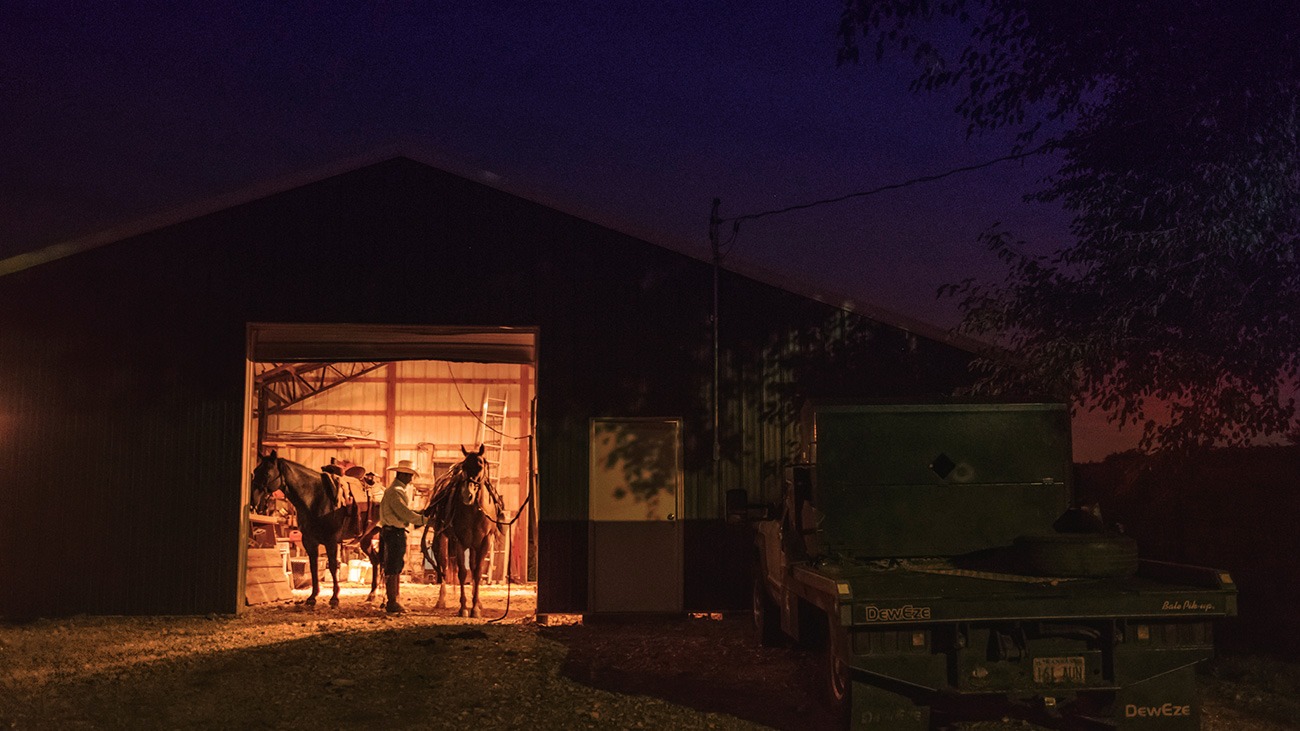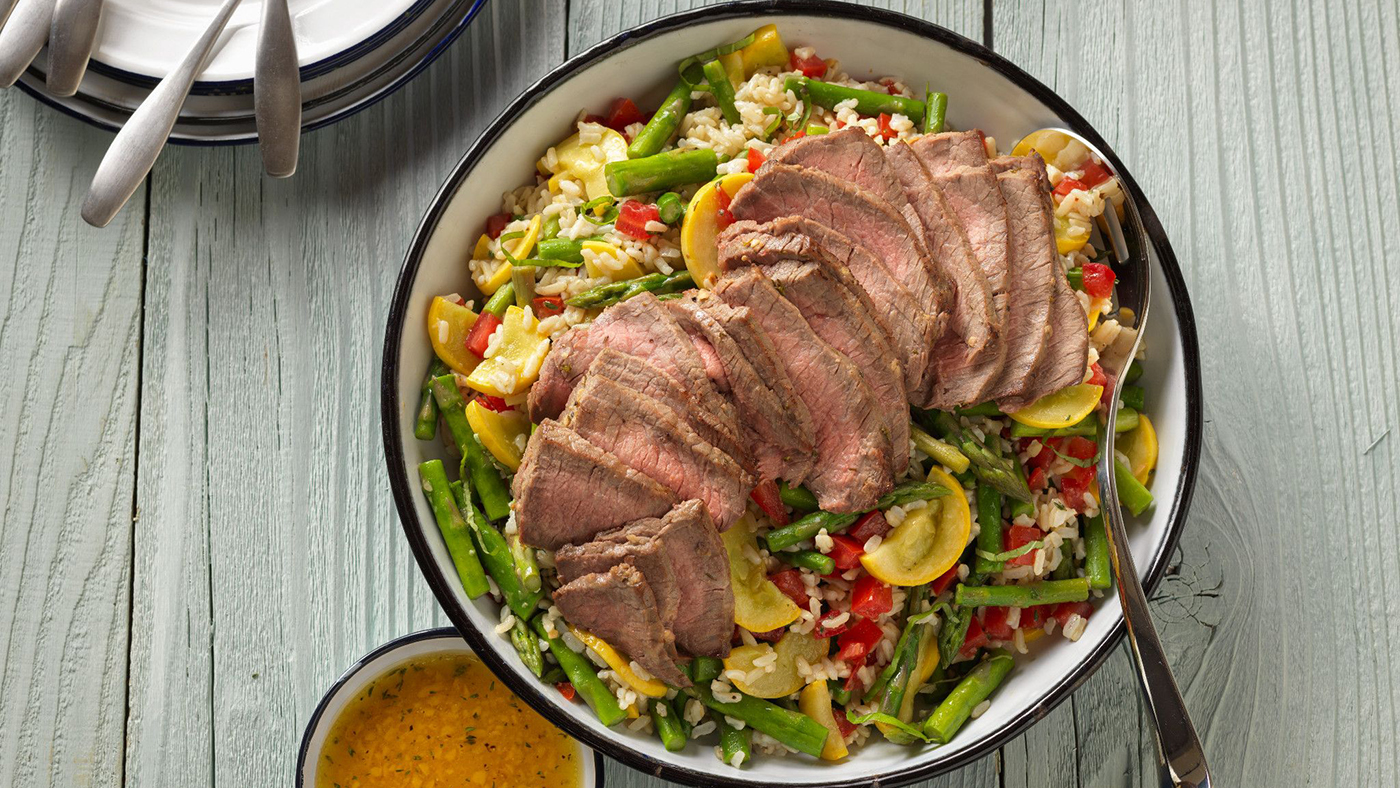How are cattle on pastures given antibiotics?
Have you ever wondered how cattle that are grazing on pastures are given antibiotics when they're sick? There's so much out there on the internet and social media that it can get, well, rather confusing. We decided to follow a rancher for a day as he checked on the cattle grazing the pastures of the Flint Hills.
Arturo
Occupation: Cattle Nutritionist and Custom Grazer
Education:
Bachelor of Science in Animal Science, Texas Tech University
Master of Science in Animal Science, Texas Tech University
PhD in Animal Science, Kansas State University
What's your typical day like on the ranch?
"When I have cattle grazing on pastures in the Flint Hills my day usually starts around 4:30am to 5:30am. I'll grab some breakfast, try not to wake up my kids, fill up my coffee and get my horses ready for a morning of riding pastures and checking cattle."



"When I get to a set of pasture, I unload my horse and start riding through the pastures checking cattle health and getting an accurate head count to make sure every calf is accounted for."
"On this specific day we found the first group of cattle just over the ridge. During the spring and summer we're primarily checking for pink eye and foot rot, which is like athlete's foot, but in cattle. You can't prevent these diseases because they can happen naturally. Cattle can get pink eye from just scratching an eye on the grass as they're walking or grazing. They can get foot rot from standing in ponds to cool themselves on a hot day. It has nothing to do with management or hygiene; some cattle will just get sick. Fortunately, most won't."

"As a rancher, I only treat calves that are sick. I am their caretaker, so I want to make sure I'm providing them the prompt care they need. I routinely go and check the cattle in the pasture for illness. We were on our second pasture of checking a group of calves when we noticed a calf in the distance that had a slight limp. When a calf has foot rot, they might have a slight limp or be off by themselves because they can't keep up with the rest of the herd. They're in pain and they need medicine to heal."
How do you catch a calf on the pasture?
"We needed to catch the calf in order to give it the medicine that would treat its foot. We were a few miles away from the nearest holding pen, so moving that calf to a pen to treat it would have caused unnecessary pain and stress by making it walk. The most ethical and low-stress way to treat this calf would be to rope it while it was still with the other calves in the pasture. Fortunately, a friend of mine came along today to help me rope any sick calves if we found one."
How do you keep the calf still so you can give it medicine?
"Once we have the calf roped and secured, we move as quickly as we can to minimize any stress that will be placed on the animal."
The calf is marked with a washable chalk pen to identify that it has been treated with antibiotics. This also makes the calf easier to identify. Here, Arturo is drawing the Food and Drug Administration (FDA) recommended dosage of approved antibiotics to treat the sick calf.
How do you know what medicine to give?
"When livestock are sick, you do whatever you can to make them feel better. You want to make sure that calf is as comfortable as possible and will recover to a normal state and do so as quickly as possible. I only use antibiotics when an animal is sick. This particular calf received an antibiotic labeled for cattle by the FDA."
How do you make sure the antibiotics won't be in my food?
"I, like all ranchers, follow the guidelines set by the FDA. The FDA has a mandatory withdrawal period that states no residue can be left within any animal when it is consumed. Before a medicine can be cleared for use in food animals, it must undergo rigorous testing for withdrawal periods. Due to the age of the calf and the antibiotic used, there will be zero residue in the meat when the animal is consumed."
a veterinarian's perspective
Farmers and ranchers are always responding to the ever-changing issues facing agriculture. One of our top priorities is addressing concerns about antibiotic resistance in both human and animal health. In response, the Veterinary Feed Directive (VFD) is being updated by the Food and Drug Administration (FDA), working with farmers, ranchers, feed manufacturers, and veterinarians. Discover how veterinarians and ranchers work together to ensure wholesome and safe food.
Antibiotic stewardship
For nearly 30 years, there have been quality assurance programs in place to help make sure farmers and ranchers are continuously improving the way they raise beef, including the way they use antibiotics, in order to protect human health, as well as animal health. This is often referred to as “antibiotic stewardship.” Find out about the Beef Quality Assurance (BQA) program and why over 10,000 volunteers in the Kansas beef community have completed the course.

How do you keep records of what antibiotics are used?
"I keep incredibly detailed records of every medication I give to my cattle. Here, I am entering the calve's ear tag number, the date I gave the shot, the antibiotic used, and the reason why I used that antibiotic. This way, I am making sure I have accurate records and can check on that calf later in the week to see how it is doing. As livestock producers, we take a lot of pride in how we treat animals and produce a safe meal for families like mine. We'll never let an unsafe product enter the food chain; it's just not the right thing to do. We eat the same food, so I'm not going to put any food in front of my children that will be harmful to them."
Did the Calf heal?
"Yes, fortunately we noticed the symptoms of foot rot early on and treated it with an FDA-approved antibiotic for treatment."
"After I'm done checking the cattle in the different pastures I'll head home to my family. It's incredibly fulfilling to come back and see my wife and kids after a morning of checking cattle. I have two little boys and the oldest is 3. It's so fun to come home and have him run up to me, give me a hug, and be excited to see me. After my oldest son gets his chance to ride the horse I rode that day, we'll sit down and have lunch together as a family. "

Memorable meals for a family in motion: Meal time is family time at the pacheco household.
"Caring for an animal that will provide nourishment not only to your child but to others as well is an amazing experience. It's a peaceful environment that I get to work in. I get to see the sun rise and set in the Flint Hills and do it horseback. When you're riding your horse through these beautiful pastures it feels like you're one with nature and you're just kind of sneaking through it. Whenever I treat livestock with antibiotics, I always have my own children in mind. My family eats the same food that everyone else does. I'm not going to put any food in front of my children that will be harmful to them."

